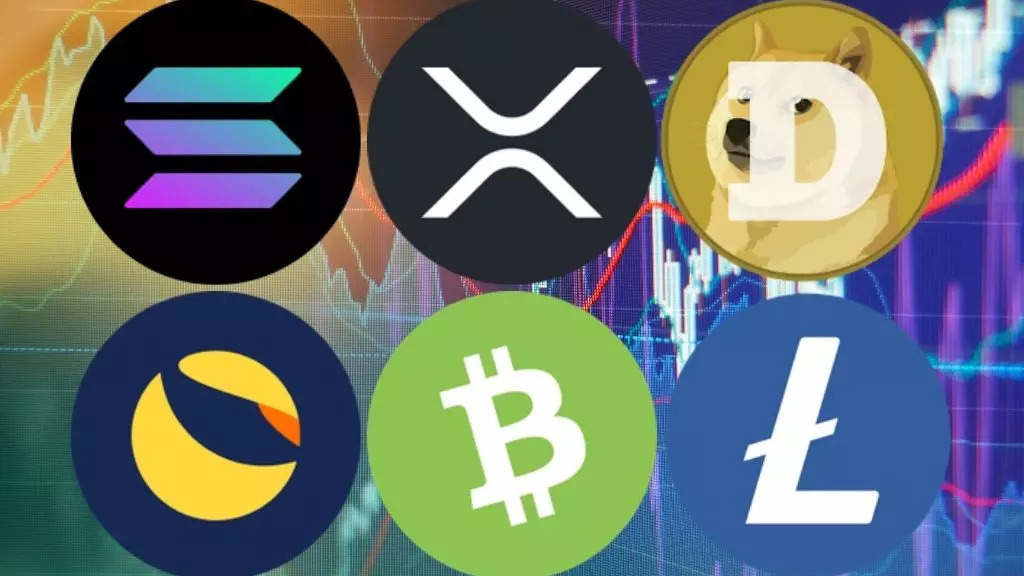Solana is seen to be well-suited for high-throughput decentralized finance solutions, and uses less processing power than Ethereum.
And, all of them need Solana tokens to transact, explaining its 100x rise in value this year — resulting in a spot among top 10 most valuable cryptocurrencies in the world.
Ripple’s XRP, also called OpenCoin, is used by some financial institutions — like Axis Bank and Yes Bank — to transfer payments across borders faster and cheaper than existing systems, like NEFT, RTGS, or the most commonly used SWIFT.
In addition to XRP, Ripple has also invested in the NFT marketplace Mintable and launched a $250 million creators fund for innovation, to help creators sell their NFTs using the XRP Ledger.
Another ‘Ethereum Killer’, this project by a Swiss research foundation uses ‘parachains’ to take aim at interoperability, scalability, and security.
Use cases range from the ordinary such as transactions and finance, to exotic ones like file storage and identity verification.
Turns out, the combination of a Shiba Inu meme, cute dogs and crypto was powerful enough to get the attention of tech billionaire, Elon Musk, eventually.
One of the first altcoins to get mass media coverage, it was similar to Bitcoin and Litecoin when created, with a few changed parameters – such as no limit to the number of coins that can be mined, making supply unlimited over time.
LUNA allows smart contracts and building DApps on top of the Terra network, including DeFi protocols such as Anchor and Mirror.
When transaction volumes of these currencies increase, they sell the native LUNA to get price stability — liquidity to match the fiat currency in circulation — and buy back LUNA when transaction volumes decrease.
Trading since September 2020, UNI is an Ethereum-based ERC-20 token that was given to users of Uniswap’s decentralised exchange .
In September, the US SEC had investigated Uniswap, to look into whether DeFi trades should be regulated under the securities framework.
Bitcoin Cash split away from Bitcoin in mid-2017 with all Bitcoin holders at the time receiving corresponding Bitcoin Cash.
The company feels that BCH is more ‘usable’ and has a ‘bigger upside potential’ because of its use case as payments between people, for goods and services, and micro-transactions such as tipping content creators or rewarding app users.
BCH also claims to be ‘greener’ than Bitcoin by allowing for faster transactions at lower fees.
LINK is an ERC-677 token that allows for ‘data-driven smart contracts’ across multiple blockchains, such Ethereum, Solana and Polygon.
It is commonly used for DeFi securities that rely on financial market data.
The main reason to do so, is to ‘shift’ liquidity from Bitcoin’s networks to the Ethereum blockchain, and participate in DeFi services that may not otherwise be natively available to Bitcoin holders.
There is no maximum limit to WBTC, and transactions complete 40 times faster than usually seen with BTC.
Seen as the first among Bitcoin alternatives, Litecoin is an altcoin that was forked from BTC.
Litecoin was forked before Bitcoin Cash for the same reason – aspiring to be used as a currency for frequent transactions with suitably low transaction fees, at least in comparison to Bitcoin.
LTC does have a supply limit of 84 million coins though, making it an asset that may rise in value over time.
Specialising in decentralised network storage using the Interplanetary File Storage protocol, it is meant to allow usage of empty storage space globally.
At last count, the network had 13.3 exabytes of storage capacity, and it cost $1.54 to buy a Terabyte – pretty good numbers considering the commercial competition.
Yet very few major developers chose to use ETC, despite improvements after the split and a dedicated community.
AAVE is the native token of Aave, known as ETHLend previously.
Supply of AAVE is currently limited to 16 million, though some derivative exchanges may allow for trading with upto 125x leverage.
Dash has grown significantly since then, but largely focuses on being a decentralised global payments network offering fast transactions at low cost .
But now, DashPay CEO Ryan Taylor has clarified that Dash’s PrivateSend feature is simply a branded implementation of non-custodial CoinJoin – being no less or more private than Bitcoin.
As a first of its kind, Aspen Coin can be thought of as owning a share of a real estate company.
Initially issued as tokens on the Ethereum blockchain, regulations mandated that it move to the ‘Securitize platform’ and is now traded using the Tezos currency.
